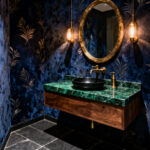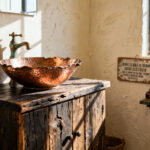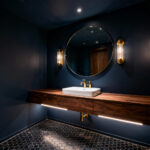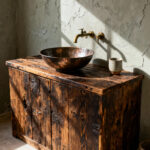The heart of any home is the kitchen – nourishment is created, memories are made, and people gather. But if your kitchen feels cold, dated, or poorly designed, you likely don’t want to spend much time there outside of necessity.
When envisioning your dream kitchen, does a warm, welcoming farmhouse-style space come to mind? One where the delicious aromas of homecooked meals waft through charming vintage accents and cozy textiles? If so, you’re craving the essence of farmhouse kitchen decor. This style blends rustic charm and functionality with a relaxed allure that entices you to cook, bake, and immerse yourself in the creative process.
But achieving that perfect farmhouse kitchen requires more than hanging some cute curtains and calling it a day. Without strategic planning and purposeful design choices, your space could quickly feel haphazard, cluttered, or thematically confused.
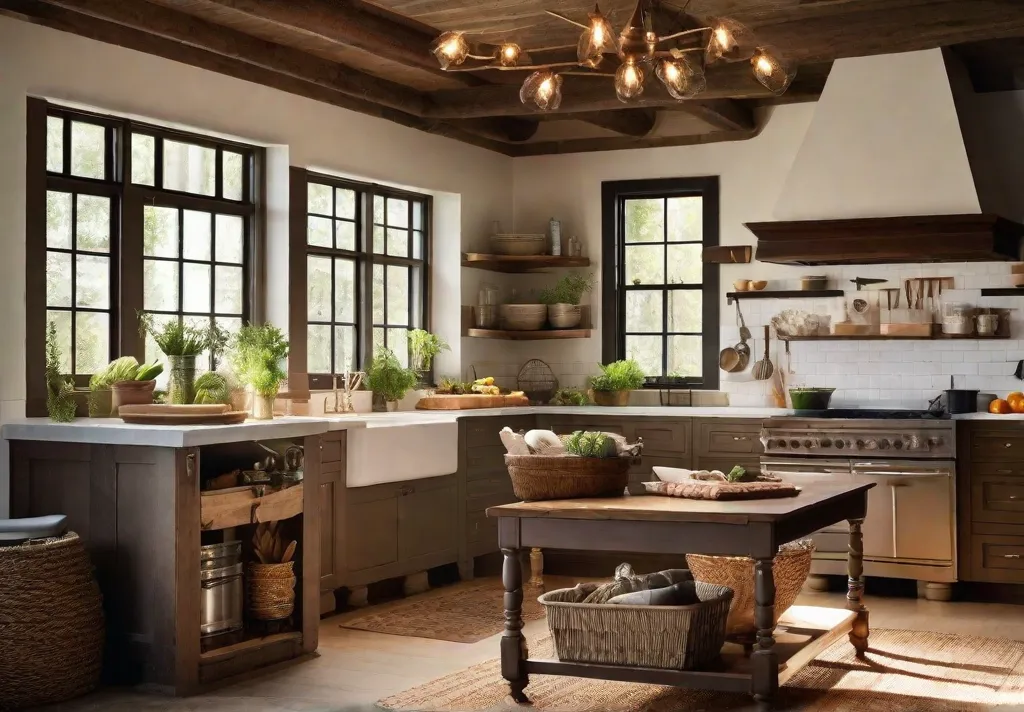
That’s where thoughtful farmhouse kitchen decor ideas come in. In this post, we’ll explore ten key elements that can help transform your existing kitchen into a warm, inviting, and eminently inspiring farmhouse haven. Read on for insights on everything from finishes and textures to lighting, storage solutions, and personal touches.
Rustic Wood Elements – A Touch of Handcrafted Appeal
Wood introduces natural warmth and texture into any space, evoking coziness and casual comfort. Reclaimed or distressed lumber is ideal for farmhouse kitchens, imparting a timeworn, artisanal quality.
Consider incorporating wood accents like:
- Butcher block countertops and islands
- Refinished cabinetry with visible woodgrain
- Repurposed furniture for open shelving
- Exposed ceiling beams
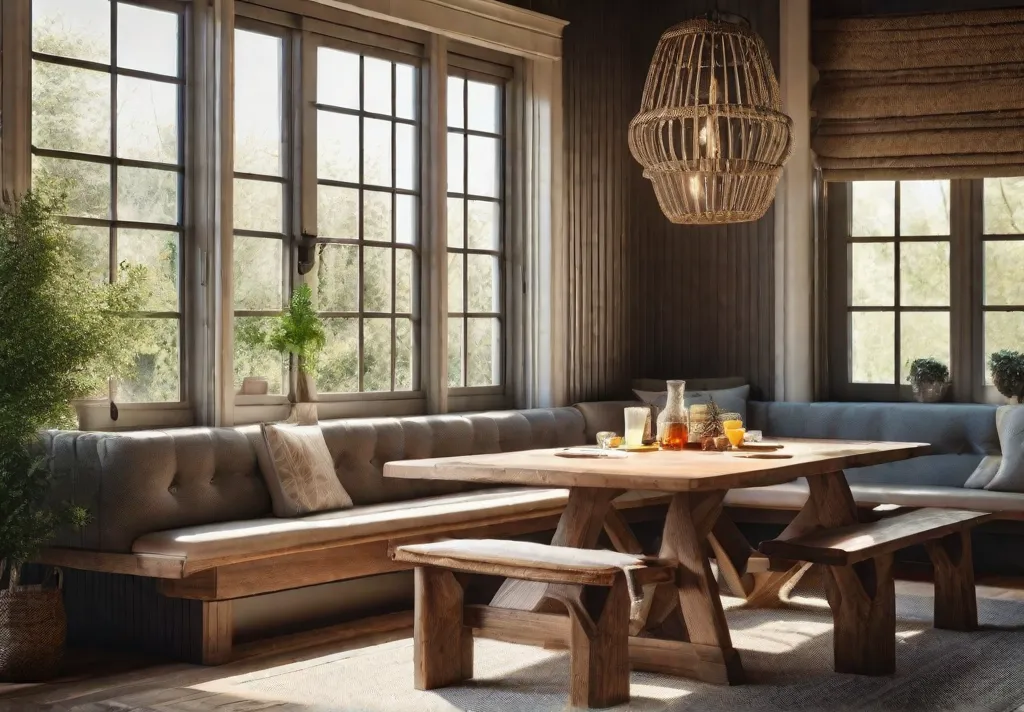
Rustic wood elements have graced farmhouse kitchens for generations due to wood’s resilience, ease of maintenance, and biophilic appeal. Treat your reclaimed wood pieces with protective finishes to guard against moisture damage, warping, and splintering. And don’t shy away from mismatching woods, stains, and distressing techniques – the more diverse the finishes, the more character your kitchen will have.
Textured Accents – Layers of Depth and Interest
Beyond fundamental surfaces and cabinetry, consider unique textural accents that introduce captivating visual and tactile interest layers. These elements prevent farmhouse kitchens from feeling flat or one-dimensional.
Some charming textural accents to incorporate:
- Stone, brick, or shiplap backsplashes
- Natural fiber baskets for storage
- Vintage glassware displays
- Ceramic knobs and pulls
- Woven rugs or textiles
- Fresh greenery arrangements
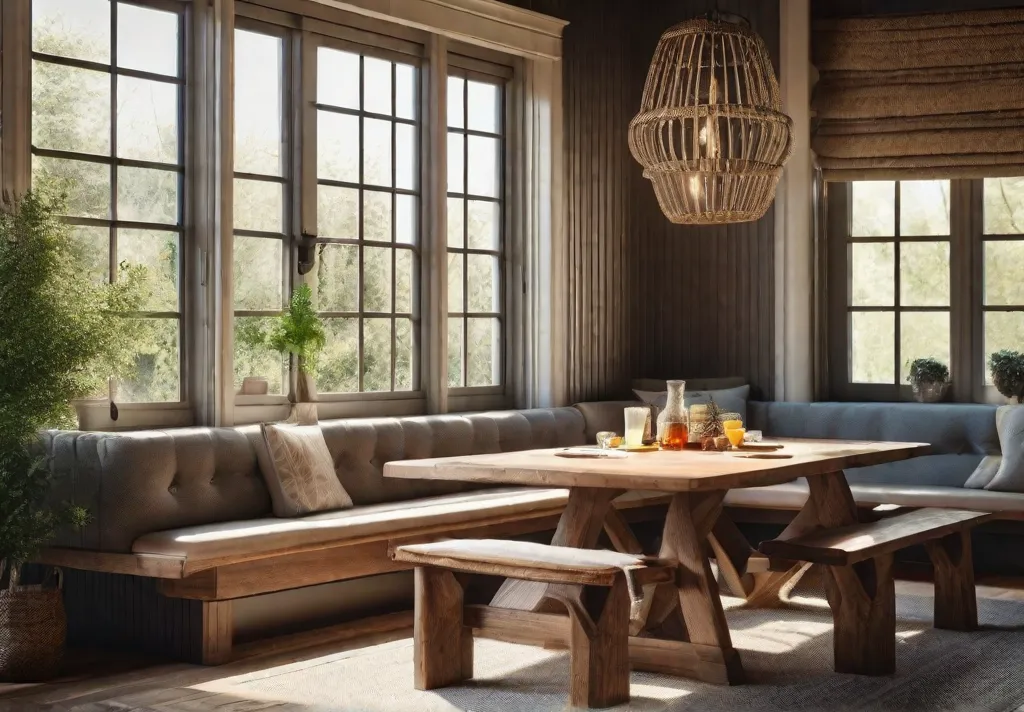
Varying textures catch the light uniquely while also tempting the hand to reach out and touch. Cluster accents with contrasting textures together to create little vignettes around your kitchen. Consider mounting woven baskets near an arrayed stone backsplash or setting a weathered cutting board display against a rough brick wall. Such thoughtful pairings make kitchens feel curated versus haphazard.
Farmhouse Sinks & Fixtures – Practical Antique Charm
At the heart of every farmhouse kitchen is invariably a showstopping apron-front sink, selected as much for its aesthetic appeal as its functionality. These enameled cast iron or fireclay sinks recall an earlier era when homes relied more heavily on wood-burning stoves, cisterns, and hand-pumped wells.
Some signature farmhouse sink perks:
- Deep single bowls to handle large pots
- Thick walls that retain heat and limit noise
- Subtly sloped sides to facilitate drainage
- High-capacity faucets with flexible heads
- Matching accessories like drying racks
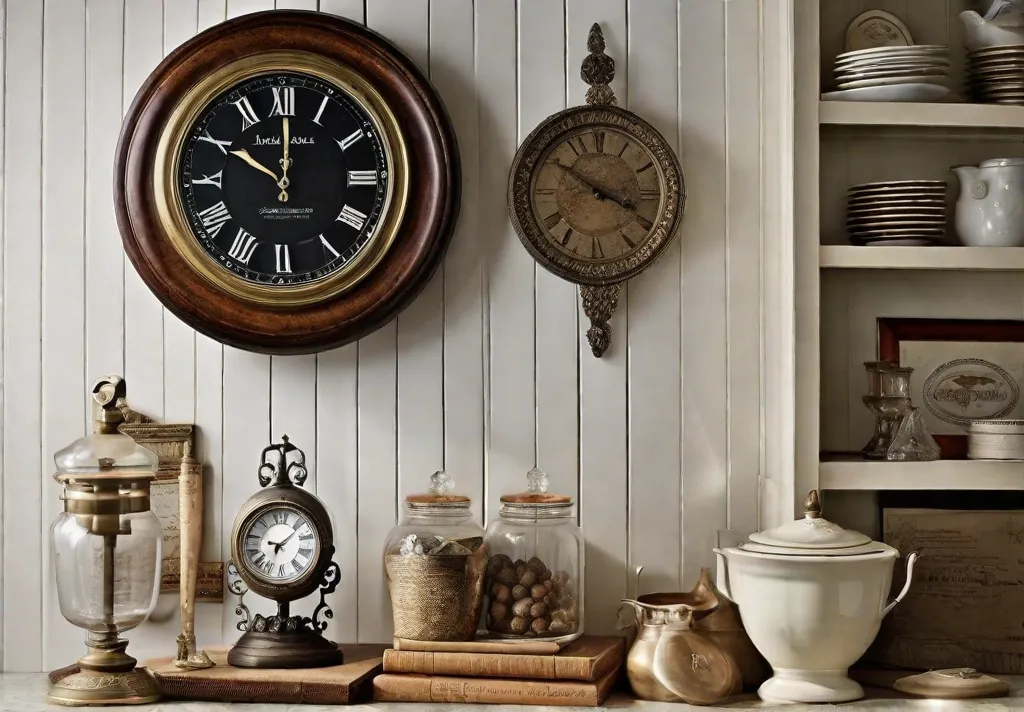
Beyond sinks, extend your farmhouse fixtures to lighting, plumbing, and hardware. Pendant lights, bridge-style faucets, bin pulls, and oversized knobs all align with the cozy farmhouse kitchen aesthetic while ensuring your space stays highly functional too.
When possible, source vintage pieces to amplify provenance and backstory. If buying new but wanting an antique look, opt for materials like solid brass rather than plastic or resin. This investment in quality ensures durability and charm over the long term.
Open Shelving & Hanging Racks – Casual Display Solutions
Cluttered lower cabinets with hidden contents can make kitchens more exciting. For more visual flair, try open shelving units and hanging racks that keep necessities accessible and artfully displayed.
Some open display ideas to try:
- Wall-mounted wine glass racks
- Rustic shelving using reclaimed barn boards
- Rail systems for hanging copper pots and pans
- Spice drawer organizers
- Glass-front cabinetry to spotlight standout pieces
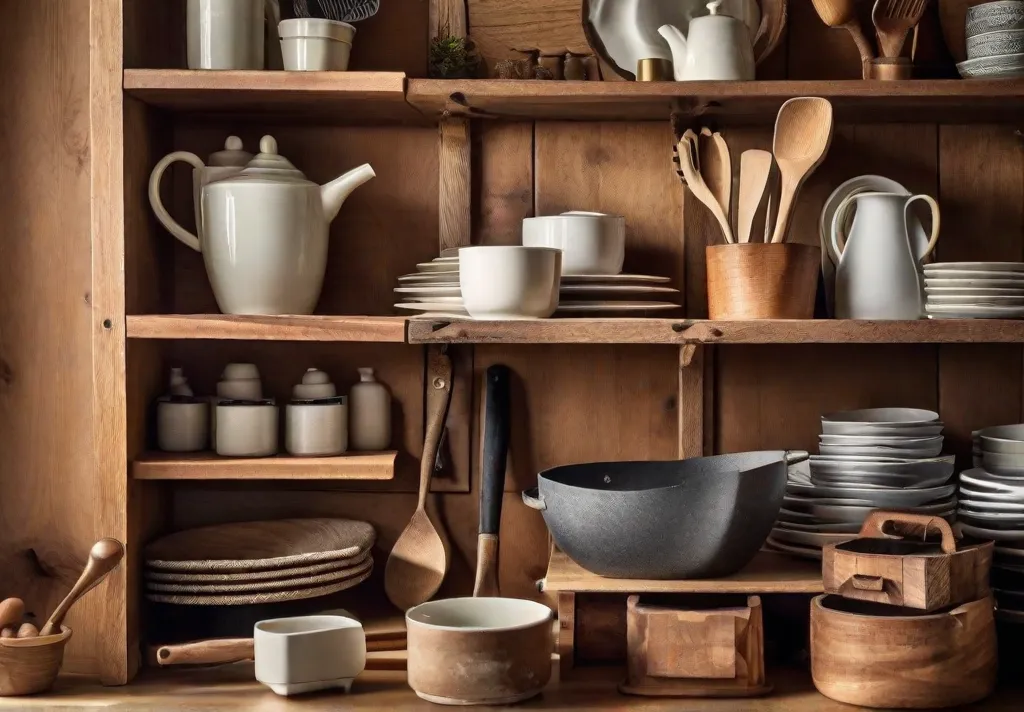
Mix closed and open storage options to strike the right balance of function and form. Group like items together on shelves while varying materials and heights to cultivate organized variety. Include everyday dishware plus unique occasion porcelain and glassware for eclectic charm.
Hanging racks keep heavily used pots and pans in reach while freeing up precious cabinet space. Install sliding barn door rails with woven baskets for lighter items like utensils and towels. This concentrates visual mass while maintaining effortless access.
Timeworn Paint Finishes – Subtle Layers of Depth
Timeworn paint finishes like limewashing and chippy paint grant new materials and surfaces an antiqued, weathered patina brimming with heritage and charm. Rather than looking freshly painted, surfaces take on a speckled, aged appearance, with hints of the original wood or brick peeking through.
A few timeworn finish techniques to explore:
- Whitewashing over existing cabinetry or walls
- Faux “chippy” paint using multiple layers
- Sponging and distressing to reveal an aged character
- Color washing with translucent pigmented glazes

Timeworn finishes soften spaces with their muted, organic tones and variegated surfaces. The finishes play with light, too, as the semi-sheer, multi-dimensional textures cast intriguing shadows and reflect different moods at different times of the day.
Experiment with faux finishing on a small scale before tackling built-ins or entire walls. Combining techniques like rag rolling, stippling, textured rollers, and border stencils enables endless customization. Seal surfaces afterward with protective varnishes or waxes to fix the timeworn aesthetic.
Vintage & Found Objects – Individuality through Curated Accents
Farmhouse style champions resourcefulness and eclecticism through displayed collections of beloved hand-me-downs, discovered deals, or family heirlooms that highlight personality.
Some characteristic vintage accessories to showcase:
- Timeworn signage or advertising prints
- Classic kitchenware like rolling pins or mercury glass canisters
- Old bottles, tins, or pottery for utensil storage
- Mismatched stacks of ceramic plates or bowls
- Antique glassware, pitchers, and cake stands
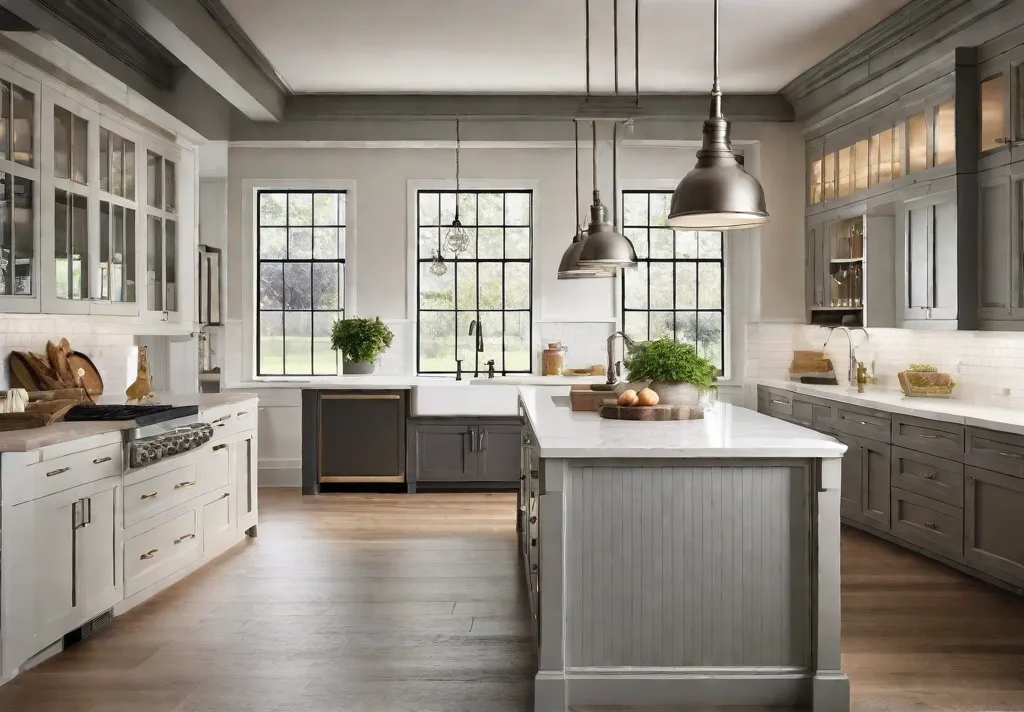
Install floating ledges, wall-mounted railings, or cubby shelving to showcase your favorite collected items neatly. Aim for mini vignettes that thoughtfully blend color, era, texture, and form without appearing haphazard or chaotic. This “curated clutter” approach makes new kitchens feel comfortably lived-in versus sterile or cookie-cutter.
Additionally, displaying nostalgic finds sparks meaningful conversations and forges connections, enriching your and your guests’ kitchen experiences.
Timeless Color Palettes – Muted Tones & Playful Accents
When it comes to color, traditional farmhouse kitchens embrace softer, muted backdrops that channel the natural hues of wood, sunlight, aged metals, and timeworn finishes. Crisp true whites and strong primaries tend to feel too stark, urban, or modern.
Some quintessential farmhouse color examples:
- Weathered white or antique white cabinets
- Pale oak or light walnut stains on the wood
- Hazy greys, taupes, and drifted blue hues
- Umber, sage, and bisque for accent walls
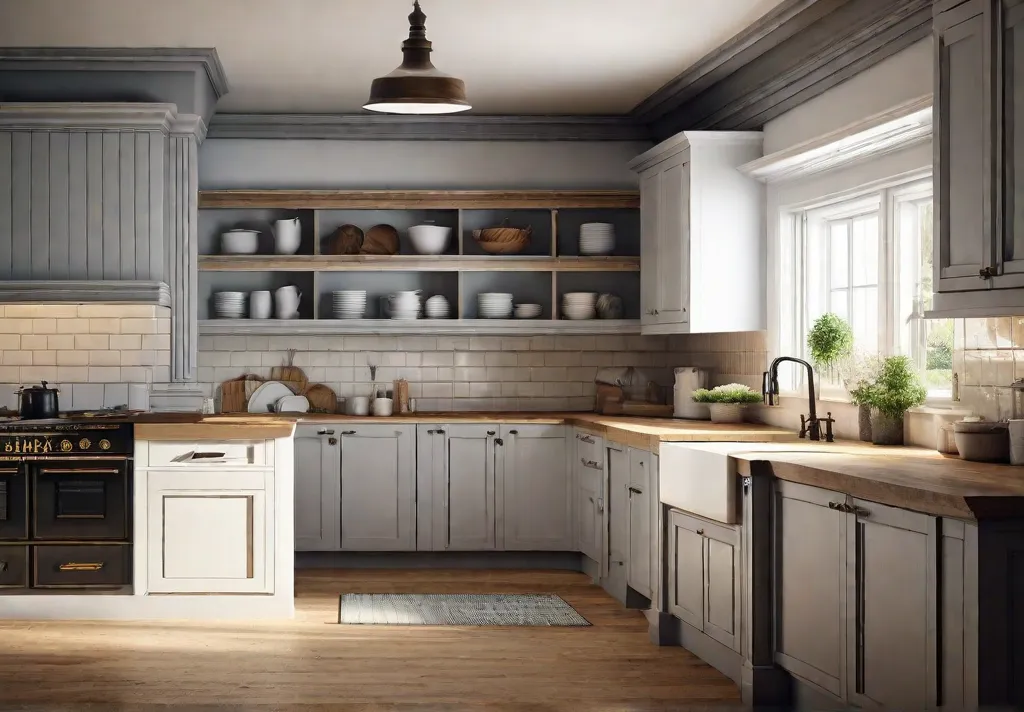
Reserve bolder colors for appliances, textiles, accessories, art, and tableware. Even vivid accent colors will seem cohesive and balanced against soft foundational backdrops. Don’t be afraid to get playful here – try a cherry red fridge, sunflower yellow pendant lights, or periwinkle blue dish towels. Bringing brighter accent colors brings vibrancy and personality into the thoughtful neutral scheme.
Ambient Lighting – Setting the Mood & Extending Usage
While plentiful windows flood farmhouse kitchens with natural light during the day, additional ambient lighting warms up the space come evening, enabling safe navigation and extending our usable hours.
Some ambient options to install:
- Pendant lighting over islands & sinks
- Sconces flanking windows or hardware
- Under cabinet lighting
- Table and floor lamps in breakfast nooks
- Lanterns lining stair railings and open shelves
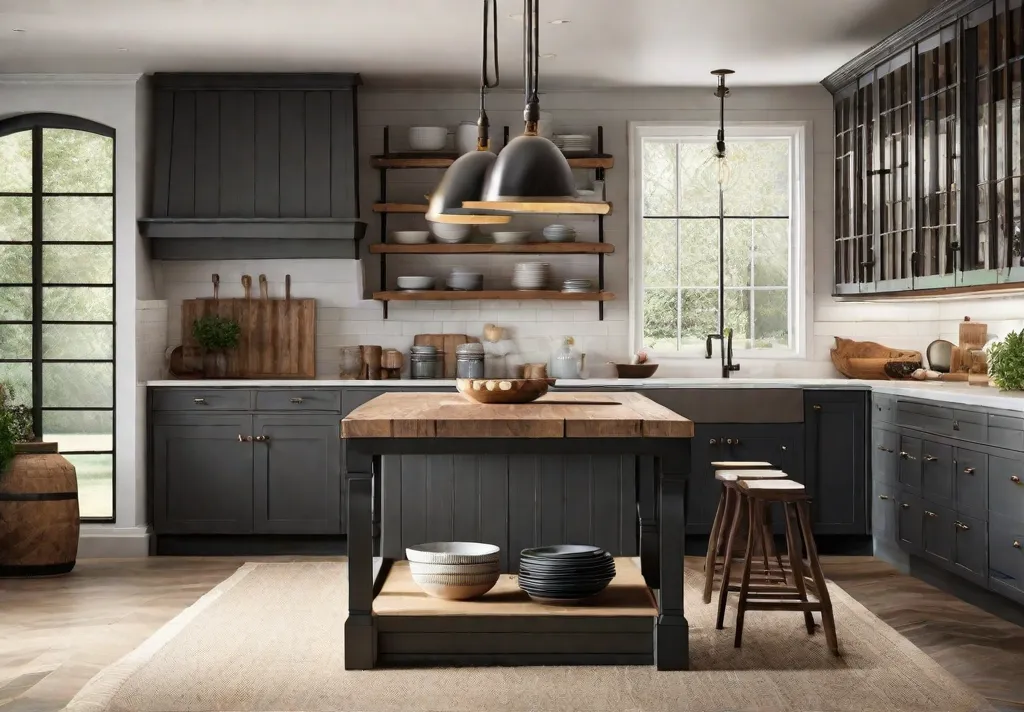
Choose fixture styles and lampshades that complement your decor. Opt for metal, wood, linen, or glass materials depending on the room’s finishes and features. Dimmer switches give you granular control over mood and brightness as needed.
Ensure you incorporate sufficient task lighting in food prep zones, stovetops, pantries, and cabinets. This combination of ambient and task lighting ensures your farmhouse kitchen stays highly functional around the clock.
Personal Touches – Customization through DIY
Farmhouse style welcomes – and even encourages – personal customization through handmade touches and do-it-yourself projects. This hands-on approach makes the space feel more uniquely yours.
Some DIY ideas to try:
- Hand-painted or stenciled backsplash tiles
- Framed botanical prints from foraged plants
- Photo collages of treasured family memories
- Painted plate wall art
- Herb garden planters you grew from seed
The options for customization are endless – it comes down to what creative hobbies and mementos hold personal significance. Incorporate pieces tied to beloved activities like cooking, nature, gardening, and arts and crafts. Or highlight sentimental themes rooted in family, community, childhood, or traditions.
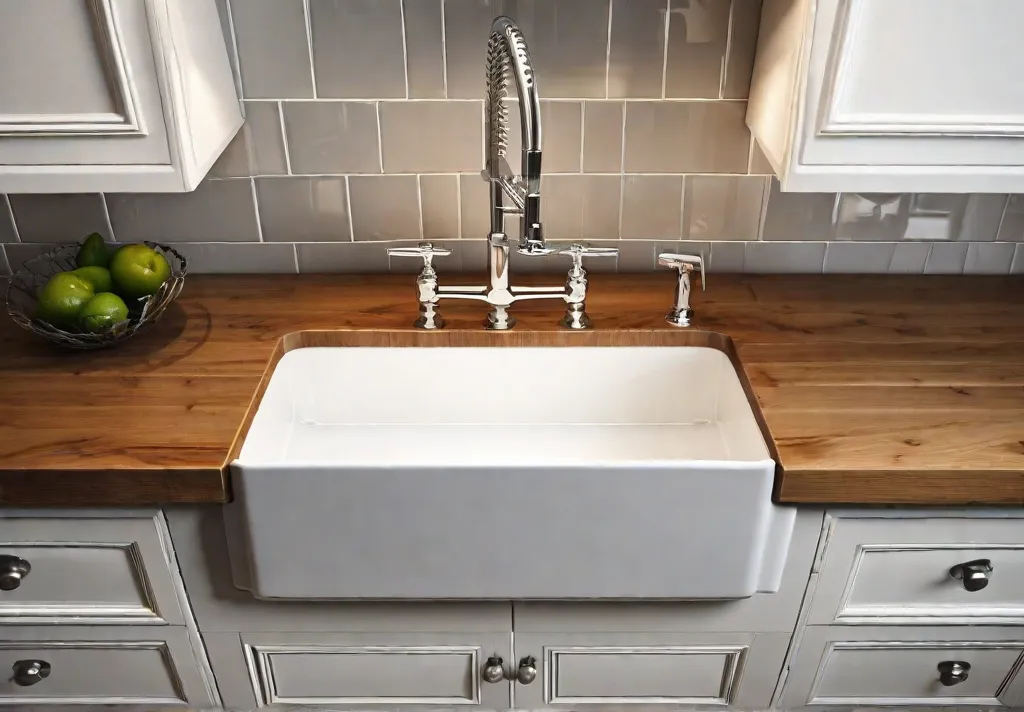
Repurposing flea market finds or vintage materials adds a layer of history and nostalgia. The beauty of DIY is that it conveys thoughtfulness versus store-bought perfection – you want guests to feel inspired to craft their additions when they visit your kitchen.
Final Thoughts
Ultimately, thoughtful farmhouse kitchen decor balances beauty and functionality with a relaxed allure that brings people together. By layering rustic and vintage elements from finishes to fixtures to accessories, you create a space that looks and feels uniquely cozy and eminently inviting.
Be both guided yet unrestricted by the fundamental principles discussed here – let some elements, like a reclaimed wood island or an apron front sink, establish stylistic cohesion while giving yourself creative liberty elsewhere. Perhaps try your hand at a mood board collage or loose layout sketches to hone in on the specific features and accents that speak to you.
Lastly, embrace resourcefulness and gradually evolve your kitchen over time by repurposing antiques and crafting custom additions. These personalized touches will make your farmhouse kitchen feel like it was designed just for you and how you cook, live, and enjoy spending time there.

